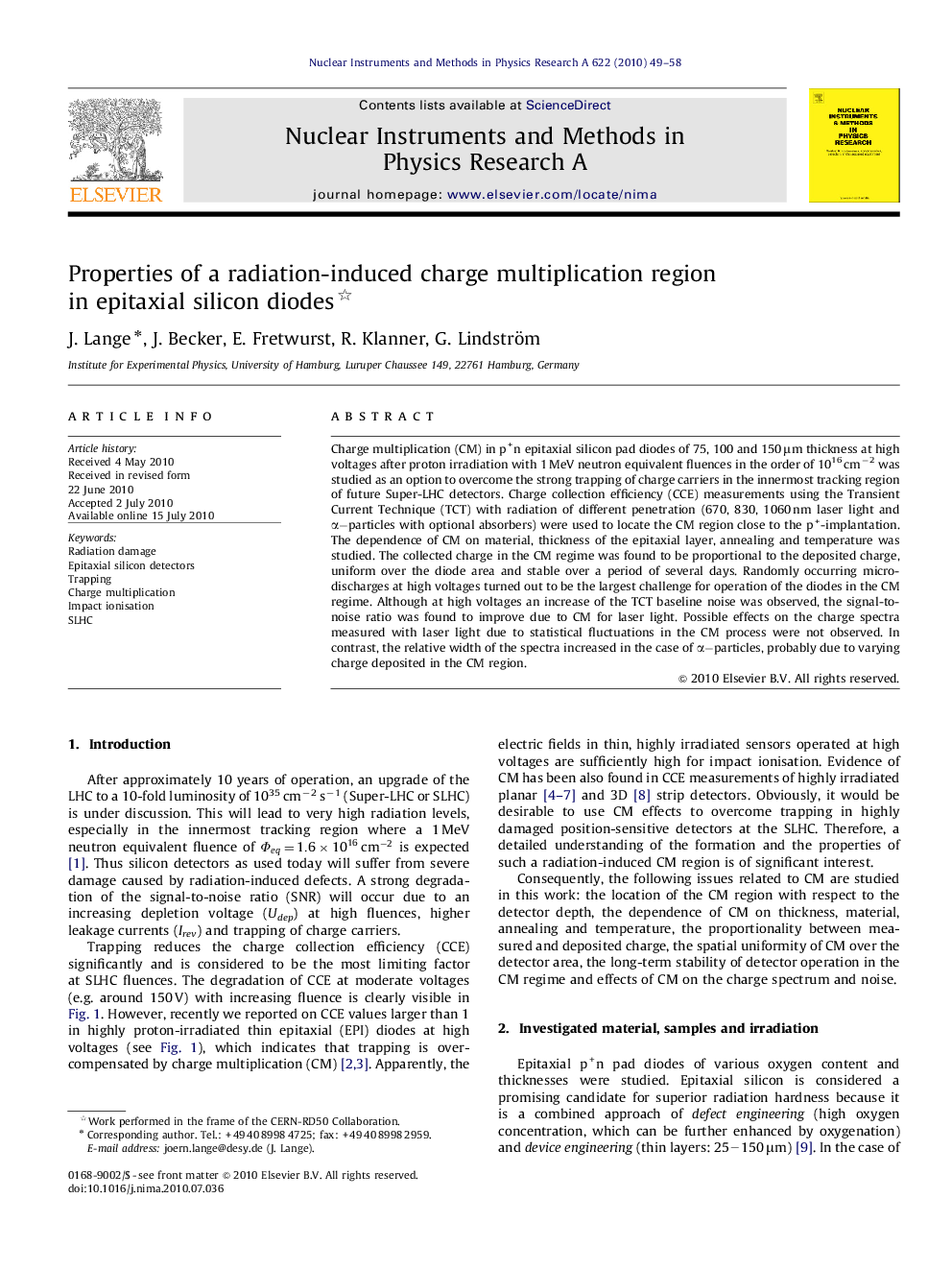| Article ID | Journal | Published Year | Pages | File Type |
|---|---|---|---|---|
| 10715862 | Nuclear Instruments and Methods in Physics Research Section A: Accelerators, Spectrometers, Detectors and Associated Equipment | 2010 | 10 Pages |
Abstract
Charge multiplication (CM) in p+n epitaxial silicon pad diodes of 75, 100 and 150μm thickness at high voltages after proton irradiation with 1 MeV neutron equivalent fluences in the order of 1016 cmâ2 was studied as an option to overcome the strong trapping of charge carriers in the innermost tracking region of future Super-LHC detectors. Charge collection efficiency (CCE) measurements using the Transient Current Technique (TCT) with radiation of different penetration (670, 830, 1060 nm laser light and α-particles with optional absorbers) were used to locate the CM region close to the p+-implantation. The dependence of CM on material, thickness of the epitaxial layer, annealing and temperature was studied. The collected charge in the CM regime was found to be proportional to the deposited charge, uniform over the diode area and stable over a period of several days. Randomly occurring micro-discharges at high voltages turned out to be the largest challenge for operation of the diodes in the CM regime. Although at high voltages an increase of the TCT baseline noise was observed, the signal-to-noise ratio was found to improve due to CM for laser light. Possible effects on the charge spectra measured with laser light due to statistical fluctuations in the CM process were not observed. In contrast, the relative width of the spectra increased in the case of α-particles, probably due to varying charge deposited in the CM region.
Related Topics
Physical Sciences and Engineering
Physics and Astronomy
Instrumentation
Authors
J. Lange, J. Becker, E. Fretwurst, R. Klanner, G. Lindström,
